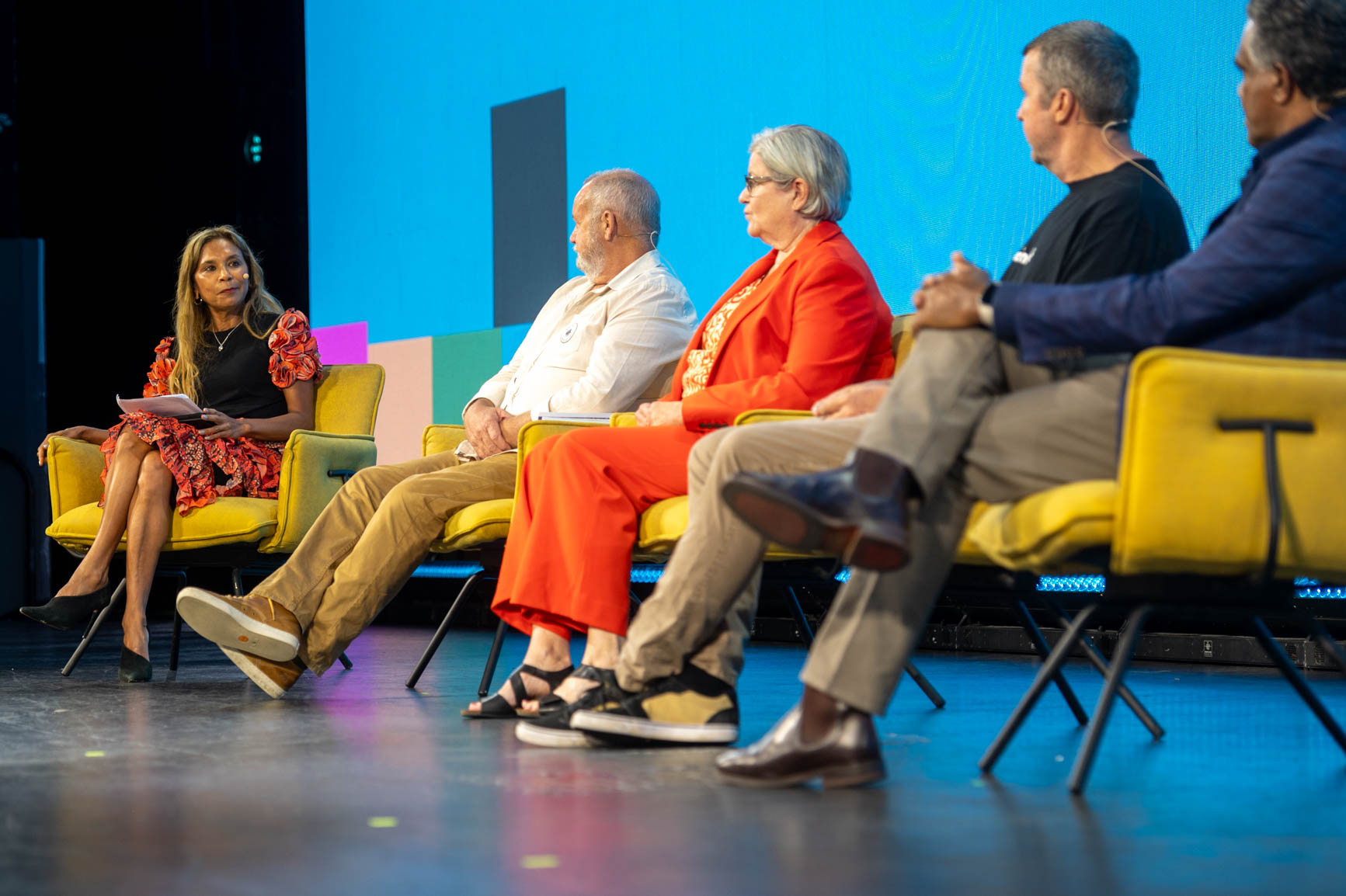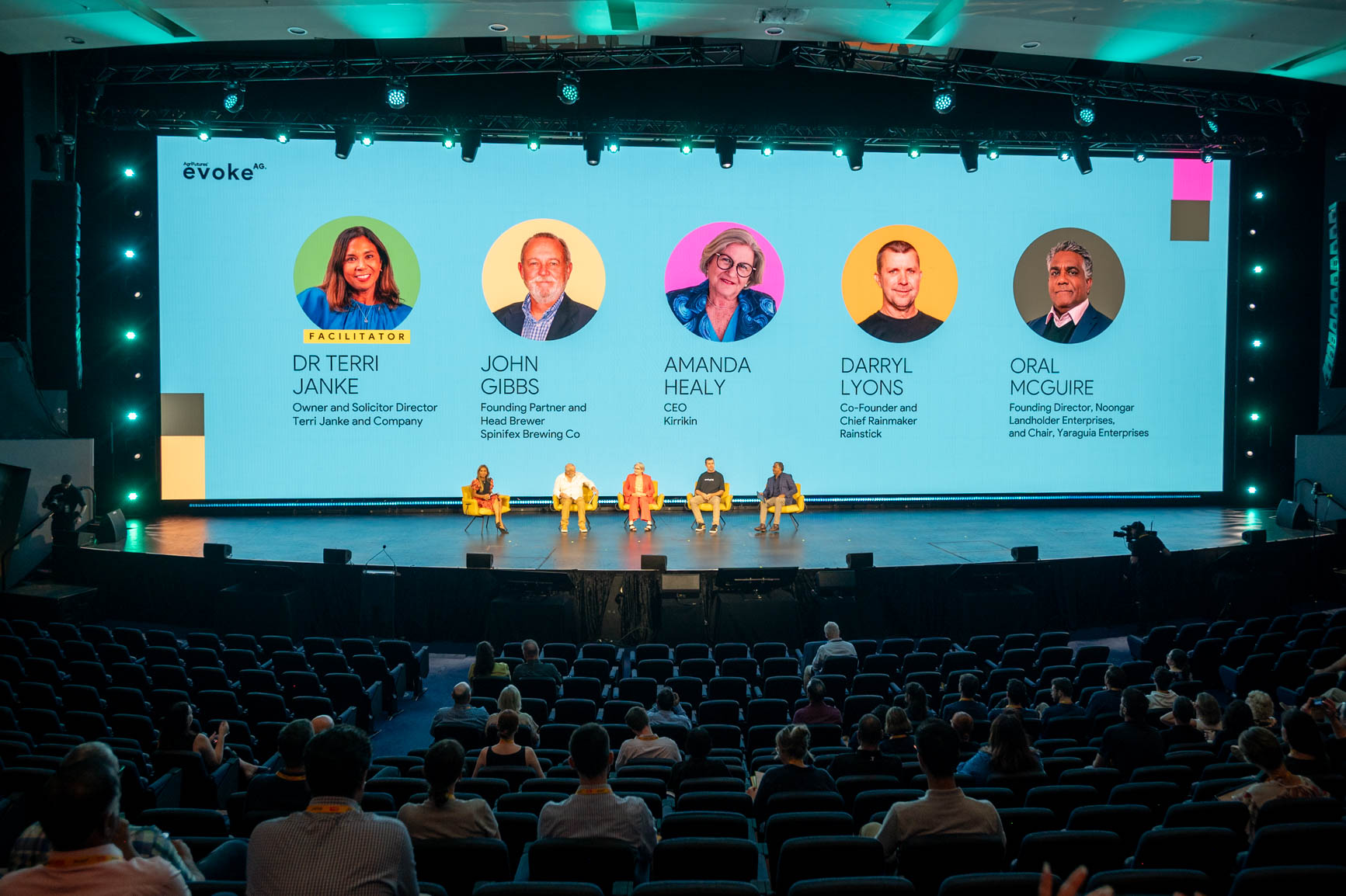Cultural IP meets capitalism: How do we ensure Indigenous innovators share the benefit?
Indigenous people have lived in Australia and interacted with country for millennia. And over this period, they’ve developed knowledge systems which have been nurtured and passed down through generations. The Western world knows such knowledge systems as intellectual property (IP). But when Indigenous cultural IP and Western business models converge, how do we ensure shared benefit?
Here, Indigenous entrepreneurs and business leaders discuss the opportunities, risks – and tremendous importance – of sharing cultural knowledge with a modern world.
The oldest known civilisation on Earth, Indigenous Australians have interacted with country for over 65,000 years. Based on millennia of observations, they’ve built complex, adaptable knowledge systems which have been nurtured and protected for generations.
The Western world knows these knowledge systems as intellectual property (IP). But when Indigenous cultural IP and Western business models collide, how do we ensure First Nations people share the benefits?
Defining – then protecting – Indigenous Cultural Intellectual Property
“Indigenous cultural and intellectual property, or ICIP, is Indigenous people’s rights to their heritage: the knowledge and cultural expression including art and story; their land management practices, knowledge of place, seasonal knowledge, knowledge of the nutritional and healing properties of plants and animals.”
RELATED: Implementing innovation with impact
Dr Terri Janke, a Wuthathi, Yadhaigana and Meriam woman, heads up Terri Janke and Company – a 100% Indigenous-owned law firm that empowers clients to achieve success in business and innovation. And for the last two decades, she’s been Australia’s authority on ICIP.
Terri advocates for the economic opportunities ICIP offers – with key caveats.
“For Indigenous entrepreneurs and innovators, sharing knowledge means opportunity and risk. There are many innovative ways ICIP can be applied, but it must be done in a respectful way. Not like past failures where there was taking without asking, without attribution, and without benefit sharing.”
While internationally the United Nations Declaration on the Rights of Indigenous Peoples and the Nagoya Protocol scaffold the protection of ICIP and access and benefit sharing arrangements, domestically, gaps in our legal frameworks push the burden of getting it right onto Indigenous entrepreneurs.
Using the law to protect Indigenous lore
Terri and her team have helped Co-Founder and Chief Rainmaker at Rainstick, Darryl Lyons, to work through the complexities of blending law and lore. His deep-tech startup, Rainstick, is a modern take on ancient wisdom, using electricity to mimic the natural effect of lightning to stimulate a plant’s biological switches and help it grow bigger, faster, and more sustainably.

Leading entrepreneurs discuss how convergence of cultural IP and western innovation can give Australian agrifood enterprises an internationally unique edge. Image | Mr.Wigley Photography.
Rainmaking is a 10,000-year-old practice, where Indigenous people used rainstick ceremonies to bring in thunderstorms to nourish the Indigenous people’s grain belt. The practice continued until as late as 1921, when the mayor of a flooded pastoral town in western Queensland called in a second ceremony to stop the rain.
Darryl relies on venture capital to commercialise his modern-day rainstick – and having just raised a pre-seed round, he’s learned a thing or two.
“When you’re dealing with investors, often they’ll want to own all the IP,” said Darryl. “But if it’s based on Indigenous knowledge, which should always be owned and controlled and nurtured by Indigenous people, that can’t always be given in a commercial transaction.”
RELATED: Dos and don’ts for harnessing the power of agricultural biologicals
“We engaged Terri and her team to protect our cultural IP and establish a foundation for the Maiawali people. We also set up a special share class that means, for every funding round we go through, equity stays with the foundation.”
Should Rainstick become a runaway commercial success and be snapped up by a corporate, Darryl has established safeguards that ensure any future owner honours these benefit-sharing principles. A further stipulation is that, should dispute arise, the Maiawali people can walk away and take their recognition of cultural heritage with them.
Darryl’s current list of investors endorse his commitment to respecting and protecting ICIP. And for other founders seeking funding, he believes impact investors are a good place to start; “People who share the vision and believe in the opportunity of what traditional knowledge can do.”
Access to private capital remains key obstacle
Oral McGuire agrees that access to funding is a critical hurdle for Indigenous innovators. The Founding Director of Noongar Landholder Enterprises, and chair of Yaraguia Enterprises, Oral said there is a vast opportunity for greenfield enterprises, but they need access to capital away from government.
“Government has an interest in, and certainly funds, many things that Indigenous people are involved in. But the model is different. There’s different compliance and a different strategy, which is to do with capacity building.”
He wants to see more examples like Rainstick where Indigenous founders are given the opportunity to compete for private, profit-seeking capital.
“It’s time that Aboriginal people had an opportunity and a right to sit at the table and bring value.
Cut price clothing and cheap copies dent Indigenous fashion cut-through
Amanda Healy is creating both cultural and financial value with her Indigenous fashion collective, Kirrikin, which celebrates the complexity, vibrance and rich storytelling incorporated in Indigenous design.

John Gibbs, Founding Partner and Brewing Director, Spinifex Brewing Co; Darryl Lyons, Co-Founder and Chief Rainmaker, Rainstick; Amanda Healy, CEO, Kirrikin; and Oral McGuire, Founding Director, Noongar Landholder Enterprises, and Chair, Yaraguia Enterprises were part of panel discussion, ‘The convergence of cultural IP and western innovation’ from AgriFutures evokeAG. 2024. It was facilitated by Dr Terri Janke, Owner and Solicitor Director of Terri Janke and Company. Image | Mr.Wigley Photography.
“There was a huge gap in the market for fashion that was authentically Aboriginal, and had an authentic connection to Aboriginal people,” said Amanda.
RELATED: ‘This woman is going to take a chance on me’: Meet the duo making a statement through fashion
But she concedes fast fashion and appropriation remain key obstacles.
“Australia’s fashion market has not fully embraced Indigenous designers and the stories they’re trying to tell,” she said.
“To me, it was really important to understand how we could help our artists become firstly, recognised, but secondly, have a sustainable income. And no disrespect to fast fashion retailers, but we compete with $4 t-shirts. So, selling a t-shirt for $90 because of the cultural stories it tells, and the beauty of its artwork, is hard.
While Amanda believes the demand for high quality, sustainable Indigenous fashion will increase as the world clamps down on textile waste, protecting ICIP is an ongoing challenge. “There’s so much appropriation in the fashion industry; the copying of traditional designs all over the world has been a big issue,” she said.
But Amanda believes it is only the global fashion industry which can fix the problem. “They need to tell that story: that the artist should benefit from the beauty of their designs, not some large [corporate] in Europe or America.”
Crafting success for the long-term
Part Indigenous owned brewery, Spinifex Brewing Co., creates crafts beers infused with native plants and ingredients. Founding partner and Brewing Director, John Gibbs, said the Craft Brewer is driven to change the world, one beer at a time. And authenticity is key.
“Western Australia’s Soth West is one of the most biodiverse places of the world; the stuff we grow is unique, amazing, and the flavours are exquisite. Indigenous Australians have a huge opportunity to make truly unique products that showcase where we live and improve the lot of indigenous communities and the rest of the community, as a whole,” said John.
RELATED: Australia’s First Nations knowledge is inspiring tech for the future of agrifood
But a ‘country-centred’ approach to innovation is key.
“From a cynical business point of view, our beers are great; taste nice, sell really well. But it’s the backstory that matters. That we’ve got Indigenous growers and harvesters collecting the ingredients, and we help them process product so that their businesses flourishes, and ours does, too.”
John Gibbs, Founding Partner and Brewing Director, Spinifex Brewing Co; Darryl Lyons, Co-Founder and Chief Rainmaker, Rainstick; Amanda Healy, CEO, Kirrikin; and Oral McGuire, Founding Director, Noongar Land Enterprises Group, and Chair, Yaraguia Enterprises were part of panel discussion, ‘The convergence of cultural IP and western innovation’ from AgriFutures evokeAG. 2024. It was facilitated by Dr Terri Janke, Owner and Solicitor Director of Terri Janke and Company.
Sign up here to receive updates on evokeAG. 2025 in Brisbane, Queensland on 18-19 February.
